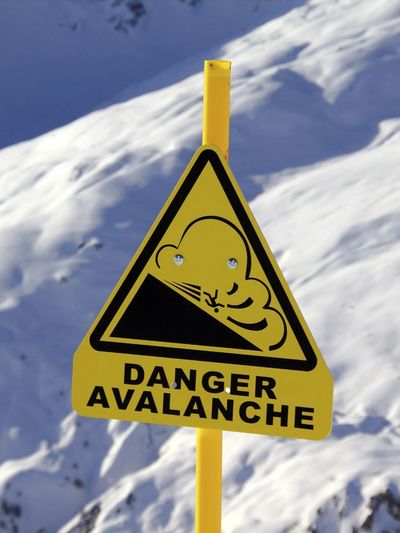Avalanche Safety
because it's really not any fun at all if you're dead!
You really need to know the risks before you ski or ride out-of-bounds or in the backcountry...
Tutorials:
Current Weather Conditions and Forecasts:
Current Avalanche Conditions by Region:
New Hampshire - Mt. Washington

12 Avalanche Tips That Could Save Your Life. Know Before You Go!
Avalanches are a significant natural hazard in the backcountry, and anyone venturing into snowy or mountainous areas should be aware of the risks and take appropriate precautions. Here are some essential things to know about avalanches in the backcountry:
Definition of an Avalanche: An avalanche is a mass of snow, ice, and debris that rapidly descends down a mountain slope. It can be triggered by various factors, such as human activity, natural forces (like snowfall or wind), or a combination of both. Here are ten tips that could save your life:
1 | Avalanche Terrain: Certain types of slopes are more prone to avalanches than others. The most dangerous slopes have an angle between 30 and 45 degrees, which is where most avalanches occur. Understanding terrain features and recognizing potential avalanche paths is crucial for backcountry travelers.
2 | Avalanche Forecasting: Before heading into the backcountry, always check the local avalanche forecast. Many regions with significant snowfall have avalanche centers that provide daily forecasts with information on avalanche danger levels, weather conditions, and potential problem areas.
3 | Avalanche Safety Gear: Backcountry travelers should carry essential avalanche safety equipment, including an avalanche transceiver (beacon), a probe, and a shovel. These tools are vital for locating and rescuing buried victims if an avalanche occurs. Know how to use them.
4 | Companion Rescue Training: Simply carrying avalanche safety gear is not enough. It's crucial to undergo proper training on how to use the equipment effectively and practice companion rescue scenarios regularly with your group.
5 | Terrain Management: Choose routes and slopes carefully, avoiding avalanche-prone areas whenever possible. It's crucial to assess the terrain constantly and make conservative decisions if conditions are questionable.
6 | Snowpack Awareness: Understanding the snowpack's stability is fundamental in avalanche terrain. This involves assessing the snow layers, bonding between layers, and recognizing signs of instability like recent avalanches, cracking, or "whumpfing" sounds.
7 | Weather Awareness: Weather plays a significant role in avalanche conditions. Pay attention to snowfall amounts, wind direction, and temperature changes, as these factors can affect the stability of the snowpack.
8 | Don't Go Alone: You should never be alone in the backcountry. Period.
9 | Group Communication: Maintain clear and open communication with your backcountry group. Discuss the plan, share observations, and be willing to adjust or abort the trip if conditions are unsafe.
10 | Don't Group Up: Create distance between members of your team and take turns watching others (from a safe location) as they cross dangerous terrain.
11 | Emergency Preparedness: Even with the best precautions, accidents can happen. Be prepared to respond quickly in case of an avalanche and know how to provide first aid to injured members of your group.
12 | Educate Yourself: Participate in avalanche education courses, workshops, or seminars. Knowledge is a crucial tool in mitigating avalanche risks and making informed decisions in the backcountry.
Remember, backcountry travel in avalanche terrain carries inherent risks, and there is no foolproof way to eliminate all dangers. However, with proper education, training, and cautious decision-making, you can significantly mitigate the risks and enjoy the beauty of the winter wilderness safely.
